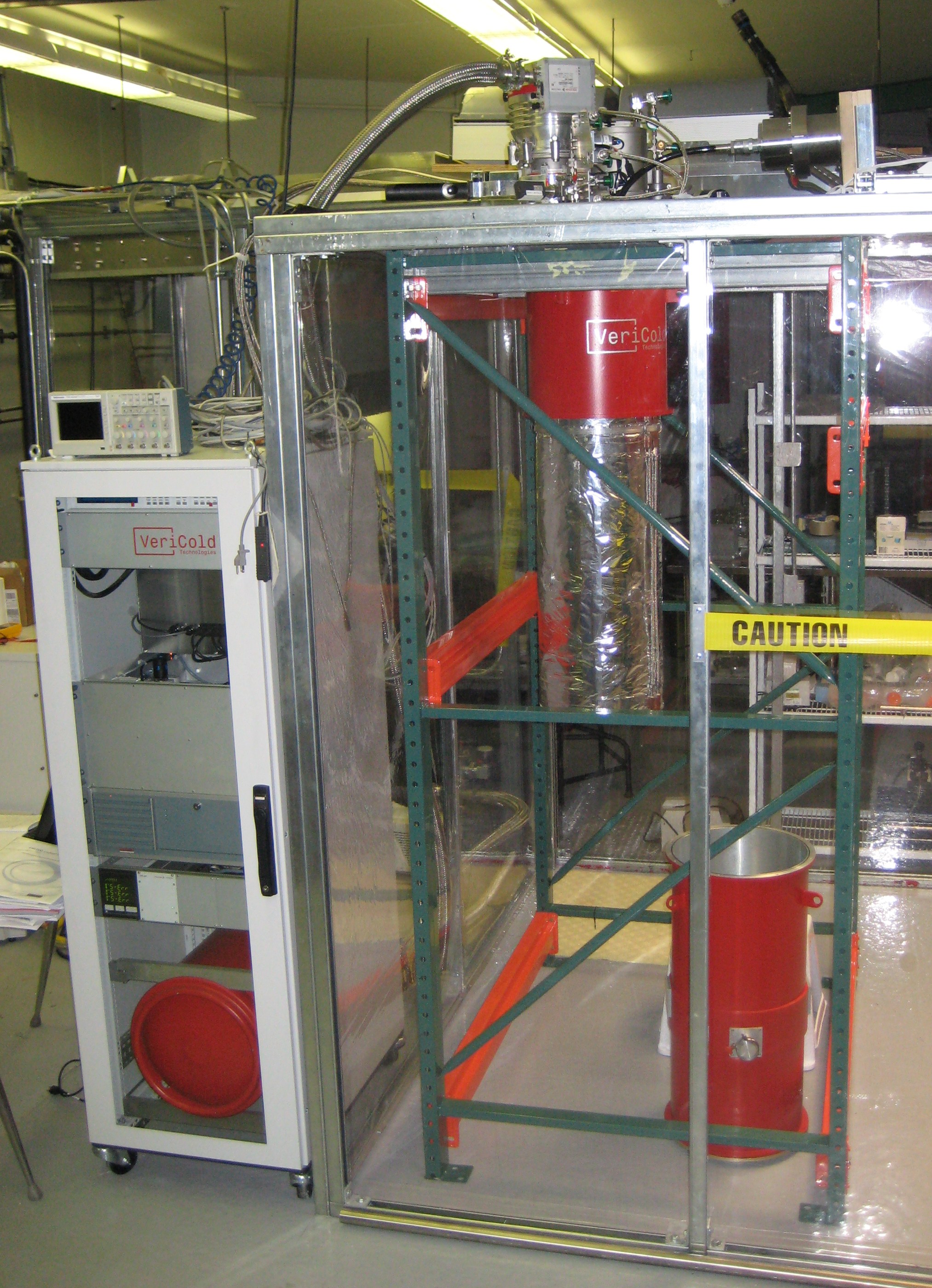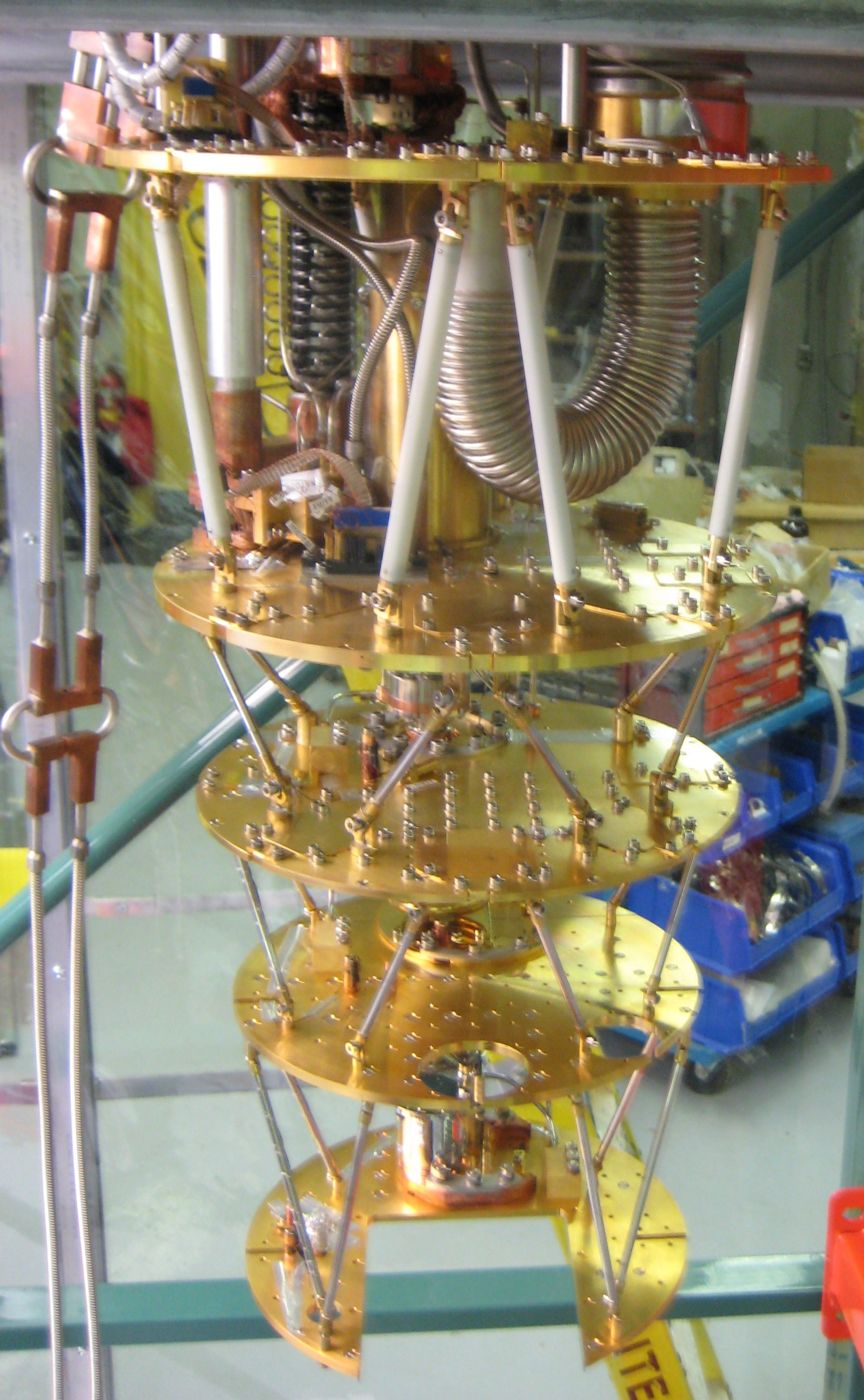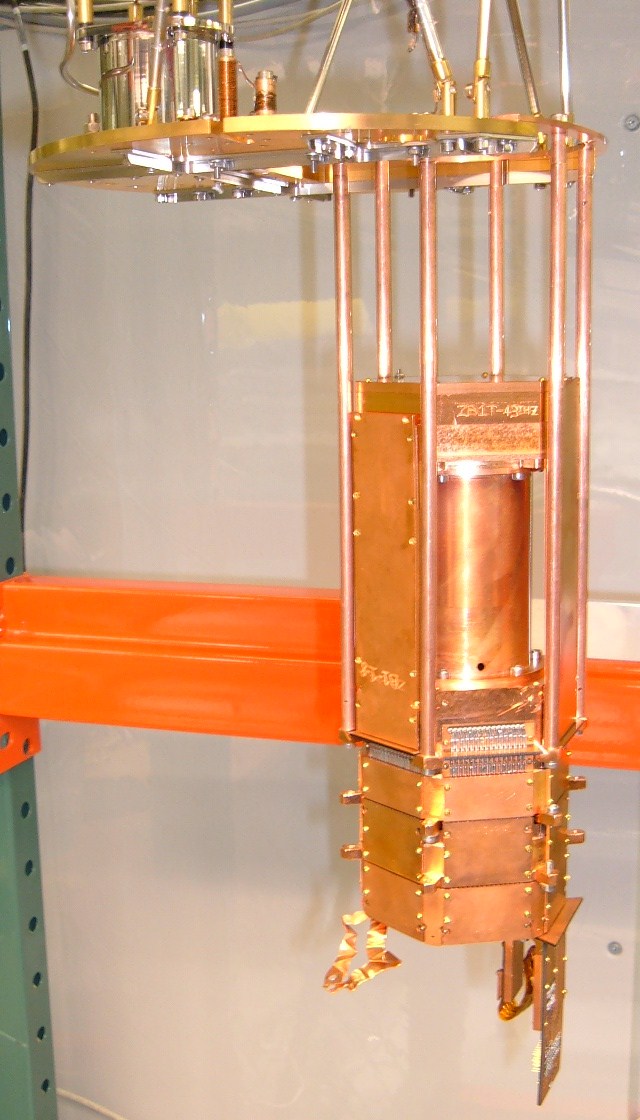Detector Testing Facility at Queen's
 Figure 1: Cryostat mounted in its frame inside a clean-room. The outside (red) is at room temperature; the next layer (reflective can) is at -200 °C during normal operation. There are several more layers inside with the coldest stage at only ~ 20 mK (or 0.02 degree above the lowest possible temperature). |
 |
Each new detector being produce for SuperCDMS needs to be tested and characterized before it can be installed in the final experimental setup. We have installed a detector testing facility at Queen's University to contribute to this testing effort. The core of this facility is a VeriCold dilution refrigerator (cryostatwhich is based on a novel technology which makes it possible to reach the necessary low temperatures without the use of liquid nitrogen or helium.
|
Besides the production testing for SuperCDMS this facility will also be used to test new detector concepts. The main developments for the next generation detectors are the further increase of the mass per detector module, new detector designs which improve the discrimination power or simplify the production process.

